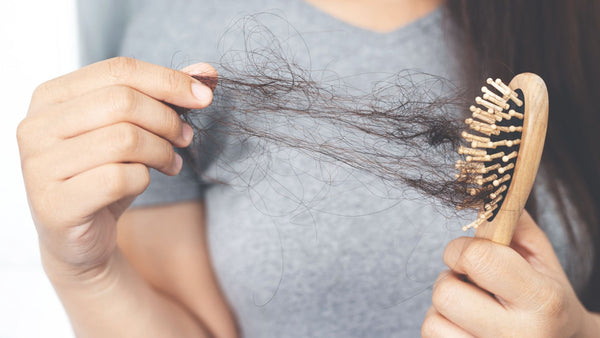The Role of Reactive Oxygen Species in Skin Ageing

Working on skin renewal and rejuvenation requires that we also understand what contributes to skin ageing at a cellular level. In this article skin expert Gay Wardle, will focus on explaining the role of Reactive Oxygen Species (ROS) and how they contribute to ageing skin. ROS is an oxidant that is generated by the mitochondria during oxidative metabolism. Over-activation can cause an imbalance where the cell is not capable of having an effective antioxidant response. Excess ROS causes oxidative stress that as well as impacting upon our skin cells, has been implicated in many diseases such as diabetes, cancer, neurodegeneration and ageing. Oxidative stress is the term used when there is an overactivation of ROS. So, what is ROS?
First, ROS is a phrase used to describe a number of reactive molecules that derive from molecular oxygen, a combination of superoxide anion, hydrogen peroxide and hydroxyl radical, which are combinations of radical and non-radical oxygen species. These by-products are generated during mitochondrial electron transport of aerobic respiration or the partial reduction of oxygen. Before discussing the critical side effects of accumulated ROS, it is important to know that ROS plays a crucial role in signaling molecules in cell proliferation and survival. Their role in cell signaling, includes, apoptosis (cell death), gene expression and the activation of cell signaling cascades. All of this occurs through both intra and intercellular messengers. In order for a cell to remain healthy, it requires a certain amount of ROS to be released each day.
WHAT IS THE DIFFERENCE BETWEEN FREE-RADICALS AND ROS?
Before proceeding, it is important to clarify the difference between free radicals and reactive oxygen species. ROS are very toxic to cells. When there are too many ROS there will be damage to mitochondria DNA. This has many side-affects, one being ageing cells and also ageing skin. Free radicals possess an unpaired electron making them highly reactive, creating much damage to all macromolecules, including lipids, proteins and nucleic acids. This also increases ageing cells and also ageing of the skin, but in a different way. While, both cause aggravation and deterioration, however they have their own pathways of doing so. The difference is cells need a certain amount of ROS for survival where as they do not need free radicals.
THE CELLS OWN DEFENCE SYSTEM AGAINST INCREASED ROS
It is important that the cell has a detoxification process of ROS for survival. This will enable the cell to defend against oxidative stress, which in turn prevents DNA damage. There are a number of non-enzymatic molecule antioxidants that play a role in this detoxification. Glutathione could be considered the most important intra-cellular defense against ROS. Glutathione is a tripeptide, which serves as an abundant target for attack. When there is a reaction between ROS and glutathione, oxidisation will occur. The ratio of the oxidised form of glutathione is a huge indicator of the increased amount of oxidative stress of cells. Vitamin C is not only capable of reducing ROS, it also can correct oxidised glutathione. Vitamin C can also reduce oxidised Vitamin E. The lipid soluble Vitamin E has a similar role in membranes where it reduces oxidation. It is important to note that the level of deterioration to the cell will increase with the amount of exposure and the amount of ROS. The cell will respond by leaving the cell cycle and entering the Go Phase. With continued increase of ROS, there is no progression of life within that cell causing apoptosis, or cell death to occur.
SIGNAL TRANSDUCTION
The combination of ROS and antioxidant enzymes enable enzymes to turn on and off by redox signaling. Redox signaling molecules are cellular messengers found in every cell of the body. They are vital for cell function and life. Redox signaling occurs when a biological system alters with a response to a change in the level of ROS. Due to the respiratory chain and other core metabolic machineries within the mitochondria itself, therefore, the mitochondria is an important redox signaling node. Mitogenic signaling happens at the outer membrane of the cell, which is a ligand receptor. During replication of cells, the cycle is tightly regulated where there are several check points. Each one of these check points is regulated by proteins and protein complexes that are influenced by the oxidative state of the cell. H2O2, or hydrogen peroxide is the main ROS involved in redox signaling to and from mitochondria, although other forms of ROS are also contributors. Nitric oxide diffusing into mitochondria competes with H2O2, as this happens, the respiration is slowed down and ROS increases.
OXIDATIVE DNA DAMAGE
DNA damage to both the mitochondria DNA and the Cell DNA occurs with increased ROS. As ROS is a result of respiration from the mitochondria, it will be the mitochondria DNA that will be the first to deteriorate. Ultra violet radiation can also increase reactive oxygen species, when this happens there will be an effect to other cellular organelles as oxidative stress is increased, mitochondria DNA is mutated and further mutation occurs to the cells’ DNA. When it comes to the skin, keratinocyte cell that have increased ROS also have a trypsin and heat–sensitive material that generates further ROS when exposed to UV radiation. Lipid peroxidation occurs because of elevated ROS to both cell membrane and mitochondria membrane. Inevitable senescence and cell apoptosis occur, causing pigment and vascular changes that contribute to an aged skin.
DNA REPAIR SYSTEMS
DNA repair systems work to buffer oxidative damage to DNA in cells, thereby helping to safeguard cells from damage. DNA repair enzymes regularly and they monitor damage to DNA in order to fix errors as they arise. They target a broad range of errors, but if the errors are not repaired, cell death and the change from a healthy to a cancerous cell may occur. It has become extremely important to understand how repair systems work to prevent and treat oxidative damage to DNA in cells. The damage that can occur when the systems are left unchecked, or are malfunctioning is crucial to cellular health. Current research is focusing on several aspects of oxidative damage mechanisms to DNA, this research is valuable in finding ways to improve a cell’s ability to withstand oxidative damage, by protecting its DNA.
CONCLUSION
We are all exposed to sources of oxidative damage, which affects our cells and can lead to damage, poor health and disease, if left unchecked. While low levels of ROS are needed for cell proliferation, regulation, signal transduction and gene expression, increased levels will cause mutation to DNA therefore increase the risk of ageing, as well as skin disease. The use of antioxidants both internal and external may assist in regulating ROS. Fortunately, our DNA repair systems are equipped to handle much of the damage that occurs to DNA, although daily applications of topical anti-oxidants is essential.
Yours in skin,
Gay Wardle




